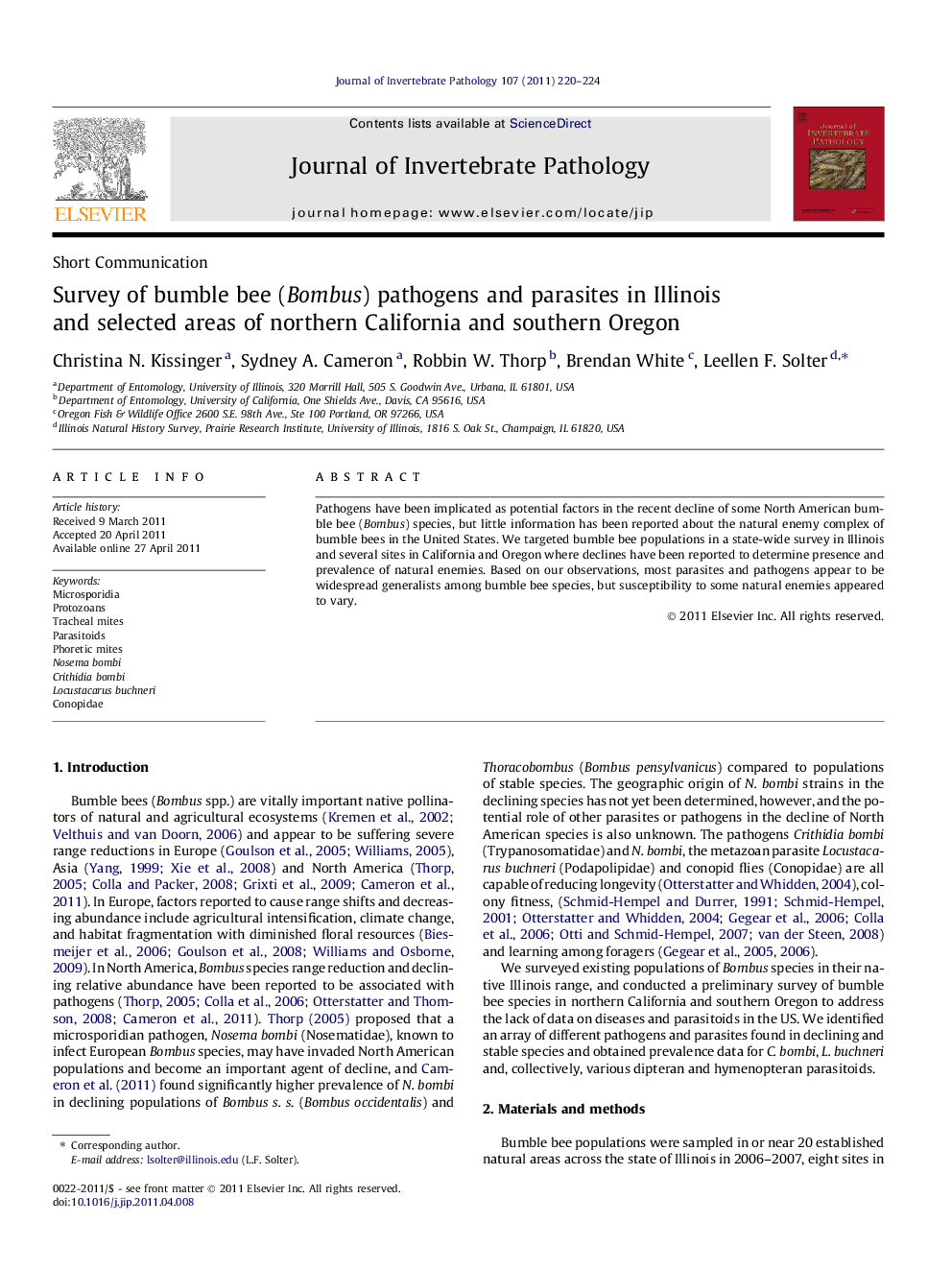| Article ID | Journal | Published Year | Pages | File Type |
|---|---|---|---|---|
| 4558035 | Journal of Invertebrate Pathology | 2011 | 5 Pages |
Pathogens have been implicated as potential factors in the recent decline of some North American bumble bee (Bombus) species, but little information has been reported about the natural enemy complex of bumble bees in the United States. We targeted bumble bee populations in a state-wide survey in Illinois and several sites in California and Oregon where declines have been reported to determine presence and prevalence of natural enemies. Based on our observations, most parasites and pathogens appear to be widespread generalists among bumble bee species, but susceptibility to some natural enemies appeared to vary.
Graphical abstractPathogens and parasites recorded from bumble bees in Illinois and selected sites in northern California and southern Oregon included (clockwise from top), Crithidia bombi, larval parasitoid (Conopidae), Nosema bombi, tracheal mite, unidentified fungal pathogen of crop, Apicystis bombi.Figure optionsDownload full-size imageDownload as PowerPoint slideHighlights► We surveyed bumble bee populations in Illinois, northern California and southern Oregon. ► The natural enemy complex was similar to that recorded in western European Bombus species. ► Parasites included tracheal mites, larvae of the dipteran parasitoid family Conopidae and hymenopteran parasitoids. ► Pathogens included Apicystis bombi, Crithidia bombi, Nosema bombi, and unidentified fungal parasites. ► All microsporidian isolates sequenced matched sequences for Nosema bombi.
